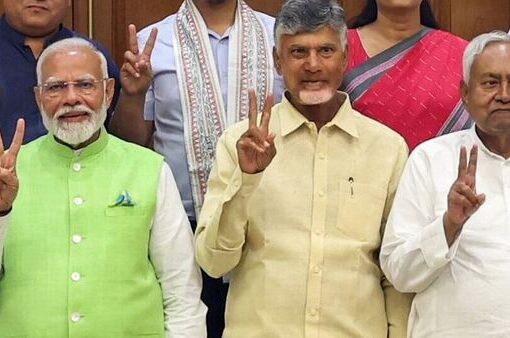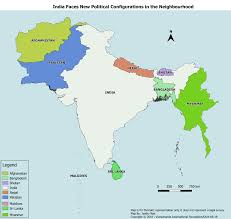by Ankineedu Prasad Nallapati*
The United States and Iran are seriously exploring prospects of a middle path even as the two are stuck to their `red lines’ on the latter’s nuclear programme. The stakes are too high for them to fail.
The US demands complete cessation of uranium enrichment in Iran, but the latter ruled out any proposal for “zero enrichment” on its soil as a nonstarter.
They apparently made some progress in their fifth round of talks, mediated by Oman, on May 23 in Rome following which, the Iranian side has asked for a written framework. This has since come and Iran is now studying the same as confirmed by its Foreign Minister Abbas Araghchi.
Proposed Framework
One of the proposals under consideration is a “jointly overseen enrichment facility in Iran, with geographic proximity to its southern Arab neighbours.” Gulf Arab states, along with the US, are potential stake holders in such a facility, although Saudis seem to have reservations.
Amwaj.media, an online news portal which claims access to Iranian leadership, reported that the latter is open to such a prospect. It also mentioned of speculations about the Natanz enrichment facility being turned into a multinational unit and the Fordow complex into a R&D centre.
The 2015 nuclear accord, which was abandoned by President Trump during his first term, had the provision to turn the underground Fordow facility into a R&D centre.
Another proposal under circulation is for an interim arrangement of temporary freeze on enrichment. Oman had proposed a six-month halt to enrichment but neither of the parties had shown any interest.
What Made US and Iran Come to Negotiations
Both the US and Iran are eager to find a peaceful solution to the nuclear issue for their own reasons.
Iran has become much weaker following Israel’s crushing attacks on the Islamic Republic as well as its regional proxies, the Hamas and the Hezbollah. Israel is itching for a military solution to wipe out Iran’s nuclear facilities. Decades of sanctions are taking their own toll on its economy.
The US, on its part, desire to have a peaceful Middle East to safeguard its commercial deals with rich Arab countries and move on to give an unfettered attention to counteract China’s regional and global ambitions to rewrite international order “in its own characteristics.”
President Trump has watered down much of his hardline approach by keeping many of the other demands out of the current nuclear negotiations like missile control regime, which is another `red line’ for Iran. He warned Israel against any military moves while the negotiations are underway.
Iran too has made its own concessions which include facilitating an understanding between the US and Houthis of Yemen halting the latter’s attacks on merchant ships in the red sea while its military attacks on Israeli targets continue. It also quietened its proxies in Iraq and Lebanon, at least temporarily.
It has given access to American experts to its nuclear installations, thus signaling its seriousness to reach a deal with the US.
Regional Pressures
The Gulf Arab nations have themselves opened up to normalize relations with Iran and thus are spared of attacks from the Houthis on their energy installations. An accord between the US and Iran would only firm up those arrangements further for regional peace.
Saudi Arabia and UAE are on an ambitious path of economic diversification and they too have a lot to loose from uncertainties in the region.
They have thus forcefully impressed upon both President Trump, during his recent trip to the region, and Supreme Leader Ayatollah Ali Khamenei.
Saudi Defence Minister, Khalid bin Salman, who is also brother of Mohammed bin Salman, the de-facto ruler of the Kingdom, was in Tehran in April with a message from the Crown Prince.
The European trio, the UK, France and Germany, who are also signatories to the 2015 nuclear accord with Iran, has also been leveraging a provision of `snap-back’ sanctions if Tehran fails to reach a new understanding with the US. The UN accord provides for signatories to reimpose sanctions on Iran if the latter is seen to be violating its provisions.
Can It Go Wrong
While there seems to be a genuine effort to get a deal done, there are several complications that can arise to derail the process.
The International Atomic Energy Agency (IAEA) has concluded in its latest assessment that Iran has dramatically increased the amount of near-weapons grade enriched uranium from its stockpile. Its quarterly report was circulated to its member states on May 31 in preparation for the agency’s board meeting next week.
It stated that since its last assessment in February, Iran has produced almost 300 pounds of uranium enriched to 60 percent, only a step away from the 90 percent required to make a nuclear weapon.
Both the US and Iran are also preparing for a worst-case scenario in the event of the negotiations falling through. President Trump has threatened to launch a military attack that Iran had never seen before. He has given Iran 90 days to reach a deal which ends on July 12.
Senior Iranian military commanders have indicated continuing preparations for potential US or Israeli strikes on the Islamic Republic and warned the Arab neighbours that the American military bases hosted by them would also be targets of their attacks, besides their energy installations.
Iran is also coordinating with China and Russia on the nuclear negotiations and potential dangers in the event of their failure. Both of them defended Iran’s right to peaceful nuclear energy and stated that the 60 percent enriched uranium has “no weapons risk.”
The negotiations are, therefore, at a critical juncture and holding of the next round of talks will depend on Iran’s response to the American proposals. The prospects look good but nothing can be certain with either President Trump or the Iranian regime.
(*Ankineedu Prasad Nallapati is President of the Hyderabad-based think-tank, “Deccan Council for Strategic Initiatives” and former Additional Secretary to Govt of India)




